 Soviet Military Power
Soviet Military Power Soviet Military Power
Soviet Military Power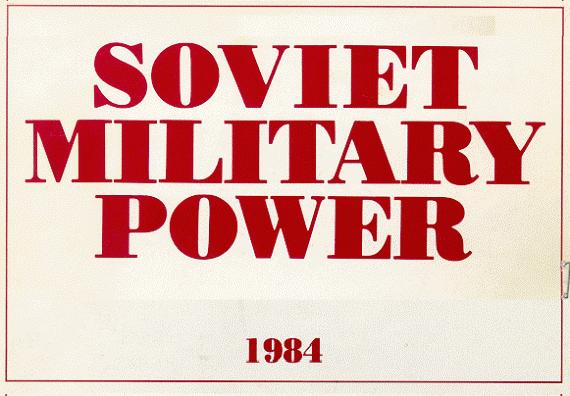
Soviet leaders, since Khrushchev's time, have followed a consistent policy for the development of their intercontinental forces. Their main objective has been to capitalize, in peacetime, on the coercive leverage inherent in powerful nuclear forces to induce paralysis in weapons programs and create political disarray in the free societies. In wartime, they would regard the threat or actual use of those forces as the key to the successful prosecution of the conflict.
In a global conflict, Soviet strategic policy would seek the destruction of Western nuclear forces on the ground and in flight to their targets, the capability to ensure national survival should nuclear weapons reach the Soviet homeland and the ability to support and sustain combined arms combat in several theaters of military operations. From these policy directives come several overarching strategic wartime missions:
- protect the Soviet State,
- support the land war in Eurasia and
- eliminate the US capability to conduct or support warfare at home and beyond its own shores.
Protection of the Soviet State, the most difficult mission, would involve:
- disruption and destruction of the West's nuclear-associated command, control and communications,
- destruction or neutralization of as many of the West's nuclear weapons as possible on the ground or at sea before they could be launched,
- interception and destruction of surviving weapons - aircraft and missiles - before they reach targets and
- protection of the Party, the State and industrial infrastructure and the essential working population against those weapons that reach their targets. Theater and strategic forces and programs in place or under active development designed to accomplish these tasks include:
- hard-target-capable Intercontinental Ballistic Missiles (ICBMs), Longer Range Intermediate-Range Nuclear Force (LRINF) missiles and land-based cruise missiles,
-bombers and air-launched cruise missiles (ALCMs) capable of penetrating US defensive systems,
- Submarine Launched Ballistic Missiles (SLBMs) and cruise missiles on various platforms,
- antisubmarine warfare (ASW) forces capable of attacking US nuclear-powered ballistic missile submarines (SSBNs),
- air and missile defenses, including early warning satellites and radars, interceptor aircraft, surface-to-air missiles(SAMs), antiballistic missile (ABM) radars and interceptors and some anti-aircraft artillery,
- antisatellite weapons,
- passive defense forces, including civil defense forces, and countermeasures troops and equipment devoted to confusing incoming aircraft and
- hardened facilities numbering in the thousands, command vehicles and evacuation plans designed to protect Party,military, governmental and industrial staffs, essential workers and, to the extent possible, the general population.
Supporting a land war in Eurasia and eliminating the US capacity to fight and support conflict would require the capability to employ theater and strategic forces over a variety of ranges and the destruction of:
- other military-associated command and control,
- war-supporting industries, arsenals and major military facilities,
- ports and airfields in the United States and those along sea and air routes to European and Asian theaters of war and
- satellite surveillance sensors, ground-based surveillance sensors,facilities and communications.
Offensive forces (ICBMs, LRINF, SLBMs, cruise missiles and bombers) and antisatellite weapons would generally be assigned these tasks. In some cases, special purpose forces could be used for these missions, especially in Eurasia. These tasks would be generally less demanding than those in the prime category.
Soviet nuclear forces are designed to fulfill their missions under the best and worst of circumstances. In the context of a nuclear war, the Soviets believe the most favorable circumstance would be a preemptive strike; the least favorable would be a follow-on strike after nuclear weapons hit the USSR. Between would be launch-under-attack; that is, executing offensive operations after weapons aimed at the USSR had been launched. The Soviets have wide-ranging programs intended to enable nuclear forces to operate under each of these circumstances. Moreover, the Soviets appear to believe that nuclear war might last for weeks or even months and have factored this into their force development.
- In a preemptive strike, the essentials would be effective coordination of the strike and sound intelligence on Western intentions. Soviet nuclear forces routinely practice command and control under various conditions. During wartime, the main mission of Soviet intelligence would be to determine the West's courses of action.
- Launch-under-attack circumstances would place the greatest stress on attack warning systems and launch coordination. To meet this demand, the Soviets have established a satellite-based ICBM launch detection system, built an over-the-horizon radar missile launch detection system to back up the satellites and have large phased-array radars ringing the USSR. These warning devices could give the Soviet leadership time to launch their forces after an enemy strike had been launched. To prepare for this possibility, the Soviets practice launching weapons under stringent time constraints.
- Follow-on strikes would stress the survivability of the command, control and communications systems as well as the weapons themselves. The Soviets have invested heavily in providing this survivability. The SS-17, SS-18 and SS-19 ICBMs are housed in the world's hardest silos. Silo deployment has been adopted for ABMs as well. To increase survivability, the SS-20 LRINF missile is mobile. Mobile ICBMs are under development, and a mobile strategic surface-to-air missile is being tested. The launch control facilities for offensive missiles are housed in very hard silos or on off-road vehicles. Communications are redundant and hardened. Higher commands have multiple vehicles and aircraft available for their use as alternate command posts. Bombers have alert procedures and dispersal airfields. Ballistic missile submarines could be placed in tunnels near their home ports, submerged in deep fjords just off their piers, dispersed or protected by Soviet surface and submarine forces.
 - The belief that war might be protracted has led to the USSR's emphasis on survivability along with war reserves, protection for people and equipment and the capacity to reload launchers. For their ICBM, LRINF and air defense forces, the Soviets have stocked extra missiles, propellants and warheads throughout the USSR. Some ICBM silo launchers could be reloaded, and provision has been made for the decontamination of those launchers. Plans for the survival of necessary equipment and personnel have been
developed and practiced. In addition,
resupply systems are available to reload
Soviet SSBNs in protected waters.
- The belief that war might be protracted has led to the USSR's emphasis on survivability along with war reserves, protection for people and equipment and the capacity to reload launchers. For their ICBM, LRINF and air defense forces, the Soviets have stocked extra missiles, propellants and warheads throughout the USSR. Some ICBM silo launchers could be reloaded, and provision has been made for the decontamination of those launchers. Plans for the survival of necessary equipment and personnel have been
developed and practiced. In addition,
resupply systems are available to reload
Soviet SSBNs in protected waters.
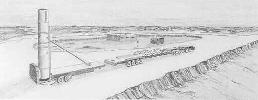 Even with these ambitious development and deployment programs over the years, the Soviets are continuing to modernize all aspects of their strategic forces. The Soviet leadership has also been directing a campaign to support and amplify ongoing anti-nuclear movements in the West, in order to influence, delay or frustrate Western nuclear program development. Using this two-pronged approach, Moscow seeks new gains in relative capability despite the drive of Western governments to redress the imbalance that has developed over the past decade.
Even with these ambitious development and deployment programs over the years, the Soviets are continuing to modernize all aspects of their strategic forces. The Soviet leadership has also been directing a campaign to support and amplify ongoing anti-nuclear movements in the West, in order to influence, delay or frustrate Western nuclear program development. Using this two-pronged approach, Moscow seeks new gains in relative capability despite the drive of Western governments to redress the imbalance that has developed over the past decade.
Because of the open nature of US society, and the fact that much US technology is unclassified, the Soviets have been able to take advantage of US research and development to accelerate their already considerable technological effort. Information and hardware already obtained have saved the USSR billions of dollars and resulted in the achievement of some military capabilities years in advance of what could have been achieved if they were solely dependent on their own resources.
 Current Systems and Force Levels. The operational Soviet ICBM force is made up of 1,398 silo launchers. Some 818 of these launchers have been rebuilt since 1972. Nearly half of these silos are new versions of the original designs and have been reconstructed or modified in the past 5 years. All of these 818 silos have been hardened, better to withstand attack by currently operational US ICBMs, and house the world's most modern deployed ICBMs - the SS-17 Mod 3 (150 silos), the SS-18 Mod 4 (308) and the SS-19 Mod 3 (360). Deployment of these ICBMs began only 5 years ago.
Current Systems and Force Levels. The operational Soviet ICBM force is made up of 1,398 silo launchers. Some 818 of these launchers have been rebuilt since 1972. Nearly half of these silos are new versions of the original designs and have been reconstructed or modified in the past 5 years. All of these 818 silos have been hardened, better to withstand attack by currently operational US ICBMs, and house the world's most modern deployed ICBMs - the SS-17 Mod 3 (150 silos), the SS-18 Mod 4 (308) and the SS-19 Mod 3 (360). Deployment of these ICBMs began only 5 years ago.
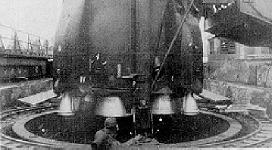 The SS-18 and SS-19 ICBMs are at least as accurate and possibly more accurate and carry more Multiple Independently Targetable Reentry Vehicles (MIRVs) than the MINUTEMAN III, the most modern operational US ICBM. The SS-18 Mod 4 carries 10 MIRVs, and the SS-19 Mod 3 carries six whereas the MINUTEMAN III carries only three. The SS-18 Mod 4 was specifically designed to attack and destroy ICBM silos and other hardened targets in the United States. Each of its 10 warheads has more than
20 times the destructive power of the nuclear devices developed during World War II. The
force of SS-18 Mod 4s currently deployed has the capability to destroy more than 80 percent
of the US ICBM silo launchers using two
nuclear warheads against each US silo. The
SS-19 Mod 3 has nearly identical capabilities.
In addition, the SS-19 Mod 3 could be used
against targets in Eurasia. The SS-17 Mod 3 is
somewhat less-capable ICBM than the SS-19 but it has similar targeting flexibility.
The SS-18 and SS-19 ICBMs are at least as accurate and possibly more accurate and carry more Multiple Independently Targetable Reentry Vehicles (MIRVs) than the MINUTEMAN III, the most modern operational US ICBM. The SS-18 Mod 4 carries 10 MIRVs, and the SS-19 Mod 3 carries six whereas the MINUTEMAN III carries only three. The SS-18 Mod 4 was specifically designed to attack and destroy ICBM silos and other hardened targets in the United States. Each of its 10 warheads has more than
20 times the destructive power of the nuclear devices developed during World War II. The
force of SS-18 Mod 4s currently deployed has the capability to destroy more than 80 percent
of the US ICBM silo launchers using two
nuclear warheads against each US silo. The
SS-19 Mod 3 has nearly identical capabilities.
In addition, the SS-19 Mod 3 could be used
against targets in Eurasia. The SS-17 Mod 3 is
somewhat less-capable ICBM than the SS-19 but it has similar targeting flexibility.
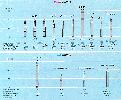 The remaining 580 Soviet ICBM silos are fitted with the SS-11-420 SS-ll Mod 2/3s
and 100 SS-ll Mod Is-and 60 SS-13 Mod 2s.These ICBMs are of older vintage, 1966 and 1973 initial deployments respectively, are housed in less-survivable silos and are considerably less capable. Nevertheless, their destructive potential against softer area targets in the United States and Eurasia is significant in terms of many of the Soviet nuclear tasks outlined above.
The remaining 580 Soviet ICBM silos are fitted with the SS-11-420 SS-ll Mod 2/3s
and 100 SS-ll Mod Is-and 60 SS-13 Mod 2s.These ICBMs are of older vintage, 1966 and 1973 initial deployments respectively, are housed in less-survivable silos and are considerably less capable. Nevertheless, their destructive potential against softer area targets in the United States and Eurasia is significant in terms of many of the Soviet nuclear tasks outlined above.
The SS-16 is a three-stage, solid-propellant,single-RV ICBM that the Soviets claim has not been deployed. The system was first tested in 1972; the last known test took place in 1976. The SS-20 LRINF missile is closely related to the SS-16. The SS-16 probably was intended originally for both silo and mobile deployment, using equipment and a basing arrangement comparable to that used with the SS-20. The Soviet Union agreed in SALT II not to produce, test, or deploy ICBMs of the SS-16 type and, in particular, not to produce the SS-16 third stage, the RV or the appropriate device for targeting the RV of that missile. Available information does not allow a conclusive judgment on whether the Soviets deployed the SS-16, but does indicate probable deployment.
 Deployment programs for all of the currently operational Soviet ICBM systems are virtually complete. The command, control and communications structure for the Soviet ICBM force is modern and highly survivable, and the reliability of the ICBMs themselves is regularly sampled by live firings from operational complexes.
Deployment programs for all of the currently operational Soviet ICBM systems are virtually complete. The command, control and communications structure for the Soviet ICBM force is modern and highly survivable, and the reliability of the ICBMs themselves is regularly sampled by live firings from operational complexes.
Those ICBMs in the current force that the Soviets decide not to replace with modified or new ICBMs will be refurbished to increase their useful lifetime. During this process,some system modifications could also be made. Owing to this capacity for refurbishment, the Soviets can sustain a higher level of confidence in system reliability over a longer term than would otherwise be possible.
Force Developments. The completion of deployment programs now under way probably marks the end of significant Soviet investment in silo-launchers and in the development of wholly new liquid-propellant ICBMs. At least one additional modified version of both the SS-18 and SS-19, however, is likely to be produced and deployed in existing silos in the future.
Despite these development programs, the Soviets appear to be planning on new, solid propellant ICBMs to redress future mission shortfalls in counterforce capability and survivability. Two new solid-propellant ICBMs,the medium-sized SS-X-24 and the smaller SSX-25, are being tested from the range head at Plesetsk in the Soviet north. Available evidence suggests mobile as well as silo deployment for both systems.
The SS-X-24 will probably be silo-deployed at first. Mobile deployment could follow several years after initial operational capability is achieved in 1985. This ICBM is likely to be even more accurate than the SS-18 Mod 4 and SS-19 Mod 3.
The SS-X-25 is approximately the same size as the US MINUTEMAN ICBM. It will carry a single reentry vehicle. The SS-X-25 has apparently been designed for mobile deployment, with a home base with launcher garages equipped with sliding roofs; massive, off-road, wheeled transporter-erector-launchers; and necessary mobile support equipment for refires from the launcher.
Development programs for all of these missiles have been under way for many years.
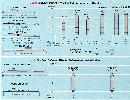 Current Systems and Force Levels. The Soviets maintain the world's largest ballistic missile submarine force for strategic attack. As of March 1984, the force numbered 64 submarines fitted with some 936 nuclear-tipped missiles. Two of these submarines do not count toward the 62 SSBN limit established by SALT I. These totals also exclude 15 older submarines with 45 missiles assigned theater missions. Sixteen SSBNs are fitted with 264 MIRV-capable submarine-launched ballistic missiles. These 16 units have been built and deployed within the past 7 years. Two-thirds of the ballistic missile submarines, including those equipped with MIRV-capable missiles, are fitted with long-range SLBMs that enable the submarines to patrol in waters close to The Soviet Union. This affords protection from NATO ASW operations. Moreover, the long range missiles allow the Soviets to fire from
home ports, if necessary, and still strike targets in the United States.
Current Systems and Force Levels. The Soviets maintain the world's largest ballistic missile submarine force for strategic attack. As of March 1984, the force numbered 64 submarines fitted with some 936 nuclear-tipped missiles. Two of these submarines do not count toward the 62 SSBN limit established by SALT I. These totals also exclude 15 older submarines with 45 missiles assigned theater missions. Sixteen SSBNs are fitted with 264 MIRV-capable submarine-launched ballistic missiles. These 16 units have been built and deployed within the past 7 years. Two-thirds of the ballistic missile submarines, including those equipped with MIRV-capable missiles, are fitted with long-range SLBMs that enable the submarines to patrol in waters close to The Soviet Union. This affords protection from NATO ASW operations. Moreover, the long range missiles allow the Soviets to fire from
home ports, if necessary, and still strike targets in the United States.
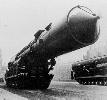 Two units of the most modern Soviet ballistic missile submarine, the TYPHOON, have already been built. One is operational and the other soon will be. Each carries 20 SS-N-20 solid-propellant, MIRVed SLBMs. The TYPHOON is the world's largest submarine, with a displacement of 25,000 tons, one-third greater than the US TRIDENT. The submarine can operate under the Arctic Ocean icecap, adding further to the protection afforded by the 8,300-kilometer range of the SS-N-20 SLBM. Three to four additional TYPHOONs are probably now under construction, and, by the early 1990s, the Soviets could have as many as eight of these potent weapons systems in their operational force.
Two units of the most modern Soviet ballistic missile submarine, the TYPHOON, have already been built. One is operational and the other soon will be. Each carries 20 SS-N-20 solid-propellant, MIRVed SLBMs. The TYPHOON is the world's largest submarine, with a displacement of 25,000 tons, one-third greater than the US TRIDENT. The submarine can operate under the Arctic Ocean icecap, adding further to the protection afforded by the 8,300-kilometer range of the SS-N-20 SLBM. Three to four additional TYPHOONs are probably now under construction, and, by the early 1990s, the Soviets could have as many as eight of these potent weapons systems in their operational force.
 In accord with the SALT I Interim Agreement, the Soviets have, since 1978, removed
10 YANKEE I units from service as ballistic missile submarines. These units had to be removed as newer submarines were produced in order for the overall Soviet SSBN force to stay within the 62 modern SSBN limits established in 1972. These YANKEEs, however, have not been scrapped and some may be returned to service as attack or cruise missile submarines.
In accord with the SALT I Interim Agreement, the Soviets have, since 1978, removed
10 YANKEE I units from service as ballistic missile submarines. These units had to be removed as newer submarines were produced in order for the overall Soviet SSBN force to stay within the 62 modern SSBN limits established in 1972. These YANKEEs, however, have not been scrapped and some may be returned to service as attack or cruise missile submarines.
In a further development with the YANKEE SSBN force, the Soviets may have begun to assign theater attack missions to some of the 23 remaining YANKEE I submarines. However, YANKEE patrols targeted against the United States continue.
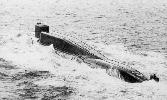 Force Developments. The Soviets have begun flight-tests of a new, liquid-propelled, long-range SLBM - the SS-NX-23. This system is likely to be deployed as a replacement for the SS-N-18 SLBM carried by the DELTA III SSBN. The SS-NX-23 will have greater throwweight, carry more warheads and be more accurate than the SS-N-18.
Force Developments. The Soviets have begun flight-tests of a new, liquid-propelled, long-range SLBM - the SS-NX-23. This system is likely to be deployed as a replacement for the SS-N-18 SLBM carried by the DELTA III SSBN. The SS-NX-23 will have greater throwweight, carry more warheads and be more accurate than the SS-N-18.
Based on past Soviet practice, by the end of the 1980s, they may initiate testing of modified versions of the SS-NX-23 and the SS-N-20. Both of these systems are likely to be more accurate than their predecessors.
The Soviets emphasize redundant and timely command and control for their military forces, especially those for intercontinental attack. The Soviets may deploy an extremely low frequency (ELF} communications system that will enable them to contact the SSBNs under most operating conditions.
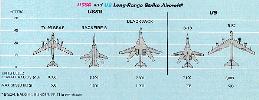 Current Systems and Force Levels. Soviet strategic bombers and strike aircraft are controlled by the central Soviet leadership using five air armies as intermediate commands. These armies were established to place Soviet strategic aircraft on a footing in peacetime that would facilitate the transition to wartime. These armies are focused on potential conflict in Europe, Asia and the United States.
Current Systems and Force Levels. Soviet strategic bombers and strike aircraft are controlled by the central Soviet leadership using five air armies as intermediate commands. These armies were established to place Soviet strategic aircraft on a footing in peacetime that would facilitate the transition to wartime. These armies are focused on potential conflict in Europe, Asia and the United States.
 Strategic aviation assets include some 170 BEAR and BISON bombers, 235 BACKFIRE bombers (including 105 BACKFIRE bombers in Soviet Naval Aviation). The Soviets also
have 455 medium-range BLINDER and BADGER bombers, 450 shorter-range FENCER strike aircraft and 530 tanker, reconnaissance and electronic warfare aircraft. The Soviets have allocated these aircraft among the five air armies to provide support for specific theaters of military operations but also to assure the flexibility to reallocate aircraft as necessary during wartime. The intercontinental BEAR and BISON bombers are available for maritime and Eurasian missions, and the BACKFIRE is clearly capable of use against the United States. This flexibility allows the Soviets to focus their strategic air assets as circumstances dictate.
Strategic aviation assets include some 170 BEAR and BISON bombers, 235 BACKFIRE bombers (including 105 BACKFIRE bombers in Soviet Naval Aviation). The Soviets also
have 455 medium-range BLINDER and BADGER bombers, 450 shorter-range FENCER strike aircraft and 530 tanker, reconnaissance and electronic warfare aircraft. The Soviets have allocated these aircraft among the five air armies to provide support for specific theaters of military operations but also to assure the flexibility to reallocate aircraft as necessary during wartime. The intercontinental BEAR and BISON bombers are available for maritime and Eurasian missions, and the BACKFIRE is clearly capable of use against the United States. This flexibility allows the Soviets to focus their strategic air assets as circumstances dictate.
 The Soviets have taken recent steps that indicate greatly increased interest in the long-range strategic bomber. An entirely new variant of the BEAR bomber (BEAR H), probably designed to carry long-range cruise missiles,is now in production-the first new production of a strike version of the BEAR airframe in over 15 years. In addition, older BEAR air to-surface missile (ASM) carrying aircraft are being reconfigured to carry the newer, supersonic AS-4 ASM in place of subsonic AS-3s. Several of these reconfigurations (BEAR G) have been completed. With the new BEAR H in series production, the decline in the inventory of BEAR and BISON aircraft characteristic of recent years has been reversed. The Soviets today have more bombers operational than just a few years ago.
The Soviets have taken recent steps that indicate greatly increased interest in the long-range strategic bomber. An entirely new variant of the BEAR bomber (BEAR H), probably designed to carry long-range cruise missiles,is now in production-the first new production of a strike version of the BEAR airframe in over 15 years. In addition, older BEAR air to-surface missile (ASM) carrying aircraft are being reconfigured to carry the newer, supersonic AS-4 ASM in place of subsonic AS-3s. Several of these reconfigurations (BEAR G) have been completed. With the new BEAR H in series production, the decline in the inventory of BEAR and BISON aircraft characteristic of recent years has been reversed. The Soviets today have more bombers operational than just a few years ago.
 The BACKFIRE is the most modern operational Soviet bomber. The Soviets continue to produce the aircraft at a rate of about 30 per year; this production rate is likely to be maintained at least through the end of the decade. The original design has been modified several times and further modifications are likely to be made to upgrade aircraft performance. The BACKFIRE is a long-range aircraft capable of performing nuclear strike, conventional attack, anti-ship and reconnaissance missions. Its low-level penetration features make it a more survivable system than its predecessors.
The BACKFIRE is the most modern operational Soviet bomber. The Soviets continue to produce the aircraft at a rate of about 30 per year; this production rate is likely to be maintained at least through the end of the decade. The original design has been modified several times and further modifications are likely to be made to upgrade aircraft performance. The BACKFIRE is a long-range aircraft capable of performing nuclear strike, conventional attack, anti-ship and reconnaissance missions. Its low-level penetration features make it a more survivable system than its predecessors.  The BACKFIRE has sufficient range/radius capabilities for it to be employed effectively against the contiguous United States on high-altitude subsonic missions. Its low-altitude supersonic dash capabilities make it a formidable weapon in support of military operations in Europe and Asia as well. The BACKFIRE can be equipped with a probe to permit inflight refueling; this would further increase its range and radius capabilities.
The BACKFIRE has sufficient range/radius capabilities for it to be employed effectively against the contiguous United States on high-altitude subsonic missions. Its low-altitude supersonic dash capabilities make it a formidable weapon in support of military operations in Europe and Asia as well. The BACKFIRE can be equipped with a probe to permit inflight refueling; this would further increase its range and radius capabilities.
The Soviets have some FENCER strike aircraft assigned to strategic aviation. The FENCER is a supersonic, variable-geometry,all-weather fighter-bomber that first reached operational status in 1974. Three variants have been developed, the most recent introduced in 1981. The aircraft is still in production, and the number assigned to strategic aviation is likely to increase by 50 percent over the next few years.
Force Developments. The new Soviet long range bomber - the BLACKJACK - is still in the flight-test stage of development. The BLACKJACK is larger than the US B1-B, probably will be somewhat faster and may have about the same combat radius. This new bomber could reach operational status in 1987. The BLACKJACK will be capable of carrying cruise missiles, bombs or a combination of both. It probably will first replace the much less capable BISON bomber and then BEAR A bomber. A new aerial-refueling tanker aircraft, based on the Il-76/ CANDID, has been under development for several years. When deployed in the near future, the new tanker will support tactical and strategic aircraft and significantly improve the ability of Soviet aircraft to conduct longer-range operations.
 Force Developments. The Soviets are developing five new, long range cruise missile systems. Three of these are variants of a small subsonic, low-altitude cruise missile similar in design to the US TOMAHAWK. These variants have a range of about 3,000 kilometers. The two others are variants of a larger system probably designed for long-range operations. This system has no US counterpart.
Force Developments. The Soviets are developing five new, long range cruise missile systems. Three of these are variants of a small subsonic, low-altitude cruise missile similar in design to the US TOMAHAWK. These variants have a range of about 3,000 kilometers. The two others are variants of a larger system probably designed for long-range operations. This system has no US counterpart.
The three smaller cruise missiles are being developed for launch from sea-, ground- and air-based platforms respectively. The sea-based variant, the SS-NX-21, is small enough to be fired from standard Soviet torpedo tubes. Candidate launch platforms for the SSNX-21 include: the existing VICTOR III SSN, a new YANKEE-Class SSN, the new MIKE class SSN (possibly a follow-on to the ALFA-Class high-speed, deep-diving SSN) and the new SIERRA-Class SSN (possibly a follow-onto the VICTOR III). The SS-NX-21 probably will become operational this year. SS-NX-21s carried by submarines could be deployed near US coasts.
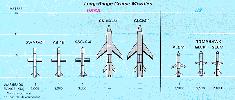 The ground-based SSC-X-4 variant of the small cruise missile may not be ready for operational deployment until about 1985. Its range and the likelihood that the Soviets will not deploy the system outside the USSR indicate that its mission will be in support of theater operations. The system will be mobile and probably follow operational procedures like those of the SS-20 LRINF missile.
The ground-based SSC-X-4 variant of the small cruise missile may not be ready for operational deployment until about 1985. Its range and the likelihood that the Soviets will not deploy the system outside the USSR indicate that its mission will be in support of theater operations. The system will be mobile and probably follow operational procedures like those of the SS-20 LRINF missile.
The air-launched version of this cruise missile - the AS-X-15 - could reach initial operational status this year on the new BEAR H ALCM carrier aircraft. The system could also be deployed on BLACKJACK bombers when that aircraft reaches operational status. The combination of the AS-X-15 and the new BEAR H and BLACKJACK bombers will increase Soviet strategic intercontinental air power in the late 1980s.
The larger cruise missile, which has not yet been designated, will have sea- and ground-based variants. Both the sea- and ground-based versions could be operational with in the next 2 years.
When first deployed, each of these five cruise missiles will be fitted with nuclear warheads and capable of threatening hardened targets. Depending on future munitions developments and the types of guidance systems incorporated in their designs, they could eventually be accurate enough to permit the use of conventional warheads. With such warheads, highly accurate cruise missiles would pose a significant non-nuclear threat to US and NATO airfields and nuclear weapons in a nonnuclear conflict.
By mid-1984, US strategic deterrent forces will consist of:
- 1,000 MINUTEMAN ICBMs,
- 33 TITAN ICBMs,
- 241 B-52G/H model bombers, plus about 23 aircraft undergoing maintenance and modification,
- 56 FB-111 bombers, plus some five aircraft undergoing maintenance and modification,
- 496 POSEIDON (C-3 and C-4) fleet ballistic launchers, and
- 120 TRIDENT fleet ballistic launchers.
The historic and continuing objective of US strategic forces is deterrence of nuclear and major conventional aggression against the United States and its Allies. This policy has preserved nuclear peace for over 38 years and, in sharp contrast to the Soviet priority accorded nuclear warfighting, is based on the conviction of all postwar American administrations that there could be no winners in a nuclear conflict. Rather, US deterrence policy seeks to maintain the situation where any potential aggressor sees little to gain and much to lose in initiating hostilities against the United States or its Allies. In turn, the maintenance of peace through nuclear deterrence provides the vital opportunity to realize a complementary and constant US goal of eliminating nuclear weapons from the arsenals of all states.
To realize these deterrence objectives requires the development, deployment and maintenance of strategic forces whose size and characteristics clearly indicate to an opponent that he cannot achieve his politico-military objectives either through employment of nuclear weapons or through political coercion based on nuclear advantages. Despite these pressing military requirements, the 1970s saw the United States exhibit restraint in modernizing its strategic forces. This was done to promote what was hoped to be significant progress in SALT negotiations. As a result, the United States did not introduce any new ICBMs, SLBMs, SSBN classes or heavy strategic bombers in the 1972 to 1978 period. The United States did introduce the Short-Range Attack Missile (SRAM) to assist strategic bombers in penetrating the extensive and growing Soviet air defenses. A limited number, 66, of FB-111 shorter-range bombers were also deployed in the 1969-70 period. These developments were required to maintain the effectiveness of our bomber force in response to the Soviet air defense improvements.
The result of the asymmetry in US and Soviet modernization programs has been to erode the perception of US deterrent capability, and its continuation could weaken US ability to maintain peace. To preclude such a possibility, to restore the real and perceived deterrent capability of the United States and to resolve the problems associated with aging US forces, the President has initiated and the Congress has supported a comprehensive and integrated strategic modernization program. This program includes:
- deployment of more survivable and effective command, control and communications systems,
- development of the new TRIDENTII submarine-launched ballistic missile and continued procurement of TRIDENT-Class submarines,
- procurement of 100 B-1B bombers in the near-term and deployment of the Advanced Technology Bomber for the l990s,
- modernization of selected B-52bombers and introduction of air launched cruise missiles into the force,
- deployment of 100 new PEACEKEEPER (MX) land-based missiles in MINUTEMAN silos beginning in 1986,and
- development of a new, small, single warhead ICBM.
Strategic defenses are vital to the overall Soviet strategy for nuclear war. As noted above, the operations of Soviet defensive and attack forces are closely coupled; attack strategies are geared in large part to the reduction of the defensive burden. In the Soviet concept of a layered defense, effectiveness is achieved through multiple types of defensive capabilities compensating for shortcomings in individual systems and for the likelihood that neither offensive strikes nor any one layer of defense will stop all attacking weapons. The Soviets have made major improvements in their deployed strategic defenses and have invested heavily in ABM-related development.
Current Systems and Force Levels. The Soviets maintain the world's most extensive early warning system for both ballistic missile and air defense. Their operational ballistic missile early-warning system includes a launch detection satellite network, over-the-horizon radars and a series of large phased-array radars located primarily on the periphery of the USSR. Their early-warning air surveillance system is composed of an extensive network of ground-based radars linked operationally with those of their Warsaw Pact Allies.
The current Soviet launch detection satellite network is capable of providing about 30 minutes warning of any US ICBM launch, and of determining the area from which it originated. The two over-the-horizon radars The Soviets have directed at the US ICBM fields also could provide them with 30 minutes warning of an ICBM strike launched from the United States, but with somewhat less precision than the satellite network. Working together, these two early-warning systems can provide more reliable warning than either working alone.
The next layer of operational ballistic missile early warning consists of 11 large HENHOUSE detection and tracking radars at six locations on the periphery of the USSR. These radars can distinguish the size of an attack, confirm the warning from the satellite and over-the-horizon radar systems and provide some target-tracking data in support of ABM deployments.
Current Soviet air surveillance radar deployments include more than 7,000 radars of various types located at about 1,200 sites. These deployments provide virtually complete coverage at medium to high altitudes over the USSR and in some areas extends hundreds of kilometers beyond the borders. Limited coverage against low-altitude targets is concentrated in the western USSR and in high-priority areas elsewhere. Since 1983, The Soviets have begun to deploy two new air surveillance radars. These radars assist in the early warning of cruise missile and bomber attacks and enhance air defense electronic warfare capabilities.
Force Developments. Since last year, an additional new large phased-array radar for ballistic missile early warning and target tracking has been discovered under construction in Siberia. This brings to six the number of such radars operational or under construction in the USSR. This new radar closes the final gap in the combined HEN HOUSE and new large-phased array radar early-warning and tracking network. Together, this radar and the five others like it form an arc of coverage from the Kola Peninsula in the northwest, around Siberia, to the Caucasus in the southwest. HEN HOUSE coverage completes the circle. The newly identified radar almost certainly violates the 1972 ABM Treaty in that it is not located on the periphery of the Soviet Union nor is it pointed outward as required by the Treaty. The complete network of these radars, which could provide target tracking data for ABM deployments beyond Moscow, probably will be operational by the late 1980s.
The Soviets may establish a network of satellites in geostationary orbit designed to provide timely indications of SLBM launches. Such a network could be operational by the end of the decade.
The USSR has a strong research and development program to produce new early warning and other air surveillance radars, as well as to improve existing systems. More than 20 types of these radars are currently in development. In addition, the Soviets are continuing to deploy improved air surveillance data systems that can rapidly pass data from outlying radars through the air surveillance network to ground-controlled intercept sites and SAM command posts. These systems will continue to be deployed until all areas are equipped with them.
Current Systems and Force Levels. The Soviets maintain around Moscow the world's only operational ABM system. This system is intended to afford a layer of defense for Soviet civil and military command authorities in the Moscow environs during a nuclear war rather than blanket protection for the city itself. Since 1980, the Soviets have been upgrading and expanding this system within the limits of the 1972 ABM Treaty.
The original single-layer Moscow ABM system included 64 reloadable above-ground launchers at four complexes for the GALOSHABM-1B, six TRY ADD guidance and engagement radars at each complex and the DOGHOUSE and CAT HOUSE target-tracking radars south of Moscow. The Soviets are upgrading this system to the 100 launchers permitted under the Treaty. When completed, the new system will be a two-layer defense composed of silo-based long-range modified GALOSH interceptors designed to engage targets outside the atmosphere; silo-based high acceleration interceptors designed to engage targets within the atmosphere; associated engagement and guidance radars; and a new large radar at Pushkino designed to control ABM engagements. The silo-based launchers may be reloadable. The new Moscow defenses are likely to reach fully operational status in the late 1980s.
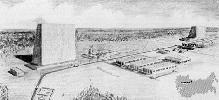 Force Developments. The USSR has an improving potential for large-scale deployment of modernized ABM defenses well beyond the 100-launcher ABM Treaty limits. Widespread
ABM deployment to protect important target areas in the USSR could be accomplished within the next 10 years. The Soviets have developed a rapidly deployable ABM system for which sites could be built in months instead of years. A typical site would consist of engagement radars, guidance radars, above-ground launchers and the high-acceleration interceptor. The new, large phased-array radars under construction in the USSR along with the HENHOUSE, DOG HOUSE, CAT HOUSE and possibly the Pushkino radars appear to be designed to provide support for such a widespread ABM defense system. The Soviets seem to have placed themselves in a position to field relatively quickly a nationwide ABM system should they decide to do so.
Force Developments. The USSR has an improving potential for large-scale deployment of modernized ABM defenses well beyond the 100-launcher ABM Treaty limits. Widespread
ABM deployment to protect important target areas in the USSR could be accomplished within the next 10 years. The Soviets have developed a rapidly deployable ABM system for which sites could be built in months instead of years. A typical site would consist of engagement radars, guidance radars, above-ground launchers and the high-acceleration interceptor. The new, large phased-array radars under construction in the USSR along with the HENHOUSE, DOG HOUSE, CAT HOUSE and possibly the Pushkino radars appear to be designed to provide support for such a widespread ABM defense system. The Soviets seem to have placed themselves in a position to field relatively quickly a nationwide ABM system should they decide to do so.
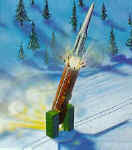 In addition, the Soviets are deploying one surface-to-air missile system, the SA-10, and are flight-testing another, the mobile SA-X-12.The SA-X-12 is both a tactical SAM and antitactical ballistic missile. Both the SA-10 and SA-X-12 may have the potential to intercept some types of US strategic ballistic missiles as well. These systems could, if properly supported, add significant point-target coverage to a wide-spread ABM deployment.
In addition, the Soviets are deploying one surface-to-air missile system, the SA-10, and are flight-testing another, the mobile SA-X-12.The SA-X-12 is both a tactical SAM and antitactical ballistic missile. Both the SA-10 and SA-X-12 may have the potential to intercept some types of US strategic ballistic missiles as well. These systems could, if properly supported, add significant point-target coverage to a wide-spread ABM deployment.
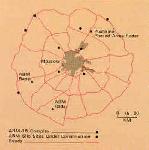 Soviet-directed energy development programs involve future ABM as well as antisatellite and air-defense weapons concepts.
By the late 1980s, the Soviets could have prototypes for ground-based lasers for ballistic missile defense. The many difficulties in fielding an operational system will require much development time, and initial operational deployment is not likely in this century.
Soviet-directed energy development programs involve future ABM as well as antisatellite and air-defense weapons concepts.
By the late 1980s, the Soviets could have prototypes for ground-based lasers for ballistic missile defense. The many difficulties in fielding an operational system will require much development time, and initial operational deployment is not likely in this century.
Ground- and space-based particle beam weapons for ballistic missile defense will be more difficult to develop than lasers. Nevertheless, the Soviets have a vigorous program underway for particle beam development and could have a prototype space-based system ready for testing in the late 1990s.
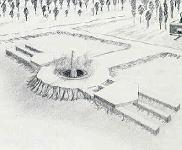 Current Systems and Force Levels. Sincerely 1971, the Soviets have had the capability to attack satellites in near-earth orbit with a ground-based orbital interceptor. Using a radar sensor and a pellet-type warhead, the interceptor can attack a target in various orbits during its first two revolutions. An intercept during the first orbit would reduce the time available for a target satellite to take evasive action. The interceptor can reach targets orbiting at more than 5,000 kilometers, but it probably is intended for high priority satellites at lower altitudes. The antisatellite interceptor is launched from Tyuratam where two launch pads and storage space for additional interceptors and launch vehicles are available. Several interceptors could be launched each day from each of the pads. In addition to the orbital interceptor, the Soviets have two ground-based test lasers that could be used against satellites. The Soviets also have the technological capability to conduct electronic warfare against space systems.
Current Systems and Force Levels. Sincerely 1971, the Soviets have had the capability to attack satellites in near-earth orbit with a ground-based orbital interceptor. Using a radar sensor and a pellet-type warhead, the interceptor can attack a target in various orbits during its first two revolutions. An intercept during the first orbit would reduce the time available for a target satellite to take evasive action. The interceptor can reach targets orbiting at more than 5,000 kilometers, but it probably is intended for high priority satellites at lower altitudes. The antisatellite interceptor is launched from Tyuratam where two launch pads and storage space for additional interceptors and launch vehicles are available. Several interceptors could be launched each day from each of the pads. In addition to the orbital interceptor, the Soviets have two ground-based test lasers that could be used against satellites. The Soviets also have the technological capability to conduct electronic warfare against space systems.
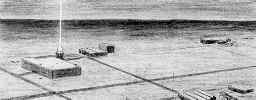 Force Developments. Emerging directed energy technologies are seen by the Soviets as offering greater promise for future antisatellite application than further development of orbital interceptors equipped with conventional warheads. The Soviets could deploy antisatellite lasers to several ground sites in the next 10 years or they could deploy laser equipped satellites either available for launch on command or maintained in orbit, or could deploy both. Such systems would have significant advantages over a conventional orbital interceptor. These include longer-range, multishot capabilities and a greater capacity to overcome the target's defensive measures.
Force Developments. Emerging directed energy technologies are seen by the Soviets as offering greater promise for future antisatellite application than further development of orbital interceptors equipped with conventional warheads. The Soviets could deploy antisatellite lasers to several ground sites in the next 10 years or they could deploy laser equipped satellites either available for launch on command or maintained in orbit, or could deploy both. Such systems would have significant advantages over a conventional orbital interceptor. These include longer-range, multishot capabilities and a greater capacity to overcome the target's defensive measures.
The Soviets could test a prototype laser antisatellite weapon as soon as the late 1980s. Initial operational capability could be achieved between the early- and mid-1990s.
Since the early 1970s, the Soviets have had a research program to explore the technical feasibility of a particle beam weapon in space. A prototype space-based particle beam weapon intended only to disrupt satellite electronic equipment could be tested in the early 1990s. One designed to destroy the satellites could be tested in space in the mid-199Os.
Current Systems and Force Levels. The Soviets have deployed massive strategic air defense forces that currently have excellent capabilities against aircraft flying at medium and high altitudes but much less capability against low-flying aircraft and cruise missiles. Soviet air defenses, however, are in the initial stages of a major overhaul geared entirely to fielding an integrated air defense system much more capable of low-altitude operations. This overhaul includes the partial integration of strategic and tactical air defenses; the upgrading of early-warning and air surveillance capabilities; the deployment of more efficient data transmission systems; and the development and initial deployment of new aircraft, associated air-to-air missiles, surface-to-air missiles and an airborne warning and control system (AWACS).
Currently, the Soviets have some 1,200 air defense interceptors and nearly 10,000 SAM launchers at over 900 sites dedicated to strategic territorial air defense. An additional 2,000 interceptors and some 1,800 tactical SAMs are deployed within the USSR's borders and could be made available for territorial defense.
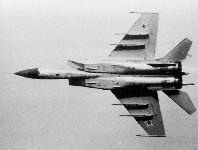 Older FOXBAT aircraft are being upgraded to the FOXBAT E configuration giving them somewhat better look-down radar capabilities. More importantly, however, the new MiG-31/FOXHOUND interceptor, the first true look-down/shoot-down-capable aircraft in the Soviet inventory, is being introduced.The FOXHOUND aircraft is comparable in size to the US F-14. Over 50 of these aircraft are now operational.
Older FOXBAT aircraft are being upgraded to the FOXBAT E configuration giving them somewhat better look-down radar capabilities. More importantly, however, the new MiG-31/FOXHOUND interceptor, the first true look-down/shoot-down-capable aircraft in the Soviet inventory, is being introduced.The FOXHOUND aircraft is comparable in size to the US F-14. Over 50 of these aircraft are now operational.
The new multiple altitude SA-10 SAM, first deployed in 1980, is now operational at some 40 sites with nearly 350 launchers and four SA-10s per launcher. In addition, SA-5 deployment continues at a very slow pace within the USSR. The most significant SA-5 deployments have occurred outside the USSR in Eastern Europe, Mongolia and Syria.
 Force Developments. Virtually all of the Soviet air defense development programs now underway are geared to overcoming a longstanding vulnerability to low-altitude air attack. Two new fighter interceptors - the Su-27/FLANKER and the MiG-29/FULCRUM - have true look-down/shoot-down capabilities. The FULCRUM is a single-seat, twin engine fighter similar in size to the US F-16. It was first deployed earlier this year. The FLANKER is larger than the FULCRUM and is about the same size as the US F-15. It, too, is a single-seat, twin-engine fighter, and it could be operationally deployed this year or next. Both have been designed to be highly maneuverable, air-to-air combat aircraft.
Force Developments. Virtually all of the Soviet air defense development programs now underway are geared to overcoming a longstanding vulnerability to low-altitude air attack. Two new fighter interceptors - the Su-27/FLANKER and the MiG-29/FULCRUM - have true look-down/shoot-down capabilities. The FULCRUM is a single-seat, twin engine fighter similar in size to the US F-16. It was first deployed earlier this year. The FLANKER is larger than the FULCRUM and is about the same size as the US F-15. It, too, is a single-seat, twin-engine fighter, and it could be operationally deployed this year or next. Both have been designed to be highly maneuverable, air-to-air combat aircraft.
 These two aircraft and the FOXHOUND are likely to operate under certain circumstances with the new Il-76/MAINSTAY Airborne Warning and Control Systems (AWACS) aircraft. The MAINSTAY will substantially improve Soviet capabilities for early warning and air combat command and control. It will provide the Soviets with the capability over land and water to detect aircraft and cruise missile targets flying at low altitudes. The MAINSTAY could be used to help direct fighter operations over European and Asian battlefields and to enhance air surveillance and defense of the USSR. Four of these aircraft have been built. The MAINSTAY should be operational this year; an annual production rate of about five aircraft is likely.
These two aircraft and the FOXHOUND are likely to operate under certain circumstances with the new Il-76/MAINSTAY Airborne Warning and Control Systems (AWACS) aircraft. The MAINSTAY will substantially improve Soviet capabilities for early warning and air combat command and control. It will provide the Soviets with the capability over land and water to detect aircraft and cruise missile targets flying at low altitudes. The MAINSTAY could be used to help direct fighter operations over European and Asian battlefields and to enhance air surveillance and defense of the USSR. Four of these aircraft have been built. The MAINSTAY should be operational this year; an annual production rate of about five aircraft is likely.
 The three new Soviet fighter-interceptors
are equipped with two new air-to-air missiles - the AA-9 designed for the FOXHOUND and the AA-X-10 designed for the FULCRUM and the FLANKER. The AA-9 is a long-range missile that can be used against low-flying aircraft; the AA-X-10 is a medium-range missile with similar capabilities.
The three new Soviet fighter-interceptors
are equipped with two new air-to-air missiles - the AA-9 designed for the FOXHOUND and the AA-X-10 designed for the FULCRUM and the FLANKER. The AA-9 is a long-range missile that can be used against low-flying aircraft; the AA-X-10 is a medium-range missile with similar capabilities.
In keeping with their drive toward mobility as a means of weapons survival, the Soviets are developing a mobile version of the SA-10 SAM. This mobile version could be used to support Soviet theater forces, but, perhaps more importantly, if deployed with the territorial defense forces, it would allow the Soviets to change the location of those SA-10s in the USSR. The mobile SA-10 could be operational by 1985.
The Soviets have efforts underway to develop at least three types of high-energy laser weapons for air defense. These include lasers intended for defense of high-value strategic targets in the USSR, those for point defense of ships at sea and theater-forces air defense.Following past practice, the Soviets are likely to deploy air-defense lasers to complement rather than replace interceptors and SAMs.The territorial-defense laser is probably in at least the prototype stage of development and could be operational between the mid- to-late 1980s. It most likely will be deployed in conjunction with SAMs in a point defense role. Since the two systems would have different attributes and vulnerabilities, they would provide mutual support. The shipborne lasers probably will not be operational until after the end of the decade. The theater-force lasers may be operational sometime sooner and are likely to be capable of structurally damaging aircraft at close ranges and producing electro-optical and eye damage at greater distances.
In addition, the Soviets have underway a development program for an airborne laser. Assuming a successful development effort, limited initial deployment could begin in the early 1990s. Such a laser platform could have missions including antisatellite defense, protection of high-value airborne assets and cruise-missile defense.
 Soviet passive defense preparations have been underway in earnest for some 30 years, and have, over time, expanded from the protection of such vital entities as the national Party and government leadership and Armed Forces, to embrace the territorial leadership, national economy and general population. The Soviets regard passive defense as an essential ingredient of their overall military posture and their war planning. In conjunction with active forces, the Soviets plan for their passive defense program to ensure the survival and wartime continuity of:
Soviet passive defense preparations have been underway in earnest for some 30 years, and have, over time, expanded from the protection of such vital entities as the national Party and government leadership and Armed Forces, to embrace the territorial leadership, national economy and general population. The Soviets regard passive defense as an essential ingredient of their overall military posture and their war planning. In conjunction with active forces, the Soviets plan for their passive defense program to ensure the survival and wartime continuity of:
- Soviet leadership,
- military command and control,
- war-supporting industrial production and services, and
- the essential workforce and protection of as much of the general population as possible.
As this program has expanded, elements of it have been designated by the Soviets as "civil defense." Use of this term in its normal Western context does not convey the full scope of Soviet Civil Defense.
Extensive planning for the transition of the entire State and economy to a wartime posture has been fundamental to Soviet passive defense preparations. The Soviet General Staff and Civil Defense officials have supervised the development of special organizations and procedures to implement quickly the transition to war and have emphasized the mobilization and protection of all national resources essential to the successful prosecution of war and recovery.
The senior Soviet military establishment has also supervised the 30-year program to construct hardened command posts and survivable communications for key military commanders and civilian managers at all levels of the Party and government. Likewise, protective hardening, dispersal and wartime production plans for Soviet industry have all been coordinated with the wartime requirements of the military and supervised by Civil Defense personnel. The protection of the general population through evacuation procedures and extensive sheltering in or near urban areas is the most visible aspect of the passive defense program.
Soviet Civil Defense Management. These passive defense programs reflect the Soviet concept of the system in its wartime mode. The wartime management system would be a militarized system of national administration in which peacetime government bodies become Civil Defense components under direct military subordination. This would extend to Soviet territorial administration at all levels and to specialized functional components such as industrial, transport, power and communications ministries. Soviet authorities at all levels would serve as uniformed chiefs of civil Defense and command their respective organizations in a military capacity. Soviet Civil Defense thus serves both as a vehicle to administer peacetime preparations and training and as the infrastructure that would knit together civil and military bodies in their unified wartime management systems.
Continuity of Leadership Functions. Soviet commanders and managers at all levels of the Party and government are provided hardened alternate command posts located well away from urban centers. This comprehensive and redundant system, composed of more than 1,500 hardened facilities with special communications, is patterned after similar capabilities afforded the Armed Forces. More than 175,000 key personnel throughout the system are believed to be equipped with such alternate facilities in addition to the many deep bunkers and blast shelters in Soviet cities.
Stability of the Wartime Economy. Soviet passive defense efforts include measures to maintain essential production and service seven during a nuclear war. Elaborate plans have been set for the full mobilization of the national economy in support of the war effort and the conversion to wartime production. Reserves of vital materials are maintained, many in hardened underground structures. Redundant industrial facilities have been built and are in active production. Industrial and other economic facilities have been equipped with blast shelters for the workforce, and detailed procedures have been developed for the relocation of selected plants and equipment. By ensuring the survival of essential workers, the Soviets intend to reconstitute vital production programs using those industrial components that can be redirected or salvaged after attack.
US and Canadian interceptor forces assigned to the North American Aerospace Defense(NORAD) Command maintain continuous ground alert at sites around the periphery of the United States and Canada. Alert aircraft intercept and identify unknown intruders. In a crisis, the Air Force, Navy and Marine Corps would provide additional interceptors. Supported by AWACS aircraft, these forces could provide a limited defense against bomber attacks.
To meet the increasing Soviet bomber and ALCM threats, US interceptor squadrons assigned to NORAD are being equipped with newer, more advanced F-15 and F-16 aircraft. These modern fighters will provide a look down/shoot-down capability to detect and engage enemy bombers penetrating at low altitudes. The Canadians are upgrading their air defense forces with the CF-18. Joint US and Canadian programmed improvements to long-range surveillance include modern microwave radars for the Distant Early Warning line and over-the-horizon back-scatter radars looking east, west and south.
Soviet space-oriented military systems pose an unacceptable threat to the land, sea and air forces of the United States. Soviet satellites probably have the capability to support targeting of Soviet anti-ship cruise missiles launched against US surface ships. The US anti-satellite (ASAT) program, centering on the Air-Launched Miniature Vehicle, is part of our response to this and similar threats. At the same time, we are continuing to examine the potential basis for negotiating ASAT arms control agreements.
Finally, the United States has called for a research program to explore the possibility of strengthening deterrence by taking advantage of recent advances in technology that could, in the long term, provide an effective defense against ballistic missiles. The effort focuses on existing research programs in five technology areas that offer the greatest promise. Given the extensive Soviet efforts in this area, the US program is a prudent and necessary hedge against the possibility of unilateral Soviet deployment of an advanced system capable of effectively countering Western ballistic missiles. Such a unilateral Soviet deployment - added to the USSR's impressive air and passive defense capabilities - would jeopardize deterrence because the US would no longer be able to pose a credible threat of retaliation to a Soviet attack.
Since the first Soviet nuclear explosion on August 29, 1949, the Soviet stockpile of nuclear warheads has grown steadily, primarily in the area of offensive weapons. In contrast, the US stockpile was one-third higher in 1967 than it is today. In addition, as a result of two landmark NATO decisions in 1979 and 1983, the nuclear stockpile in Europe will decline by one-third from its 1979 level.
The USSR's nuclear weapons program has shown diversity and sophistication. Today, Soviet nuclear warheads include a full spectrum of fission and thermonuclear designs using uranium, plutonium and tritium, with weapons yields up to multimegaton. The preponderance of these weapons is assigned to strategic offensive forces. Because of MIRVing, the megatonnage in the Soviet arsenal leveled in the early seventies, and then began to drop. However, with the deployment of new nuclear weapons systems their stockpile megatonnage has again started to rise.
The Soviet nuclear energy and weapons development program and its associated industrial base are characterized by a highly centralized control structure. The ministry controlling nuclear weapons development and production is in charge of all nuclear materials, reactors and weapons research and development (R&D) as well as production. Since the ministry controls virtually all facilities related to the nuclear industry, reactor utilization can be unilaterally altered to satisfy military requirements, regardless of the-military or commercial nature of the particular reactor facility.
Finally, during the past two decades, the number of workers and the amount of floor space of the Soviet nuclear weapons research and development facilities have exhibited constant growth. Manpower devoted to nuclear R&D probably exceeds 30,000 employees and is comprised of the best scientists,mathematicians, engineers and technicians Soviet academia can produce. Their R&D efforts are supported by an active nuclear test program conducted at the Novaya Zemlya and Semipalitinsk nuclear test sites.
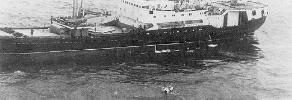 Soviet Military Power 1983 outlined the expansion into space of the Soviet quest for military superiority. During the ensuing year, The Soviets have made progress toward their dual military objectives of global support to military forces and denial of enemy employment of space during wartime. In addition, progress has been made toward the two other key objectives of enhancing the influence and prestige of the USSR and contributing to the Soviet economy. There has been no change in the heavy Soviet emphasis on the military applications of space, reflecting their view, noted as early as two decades ago in the classified Soviet military publication, Military Thought,that "the mastering of space [is] a prerequisite for achieving victory in war."
Soviet Military Power 1983 outlined the expansion into space of the Soviet quest for military superiority. During the ensuing year, The Soviets have made progress toward their dual military objectives of global support to military forces and denial of enemy employment of space during wartime. In addition, progress has been made toward the two other key objectives of enhancing the influence and prestige of the USSR and contributing to the Soviet economy. There has been no change in the heavy Soviet emphasis on the military applications of space, reflecting their view, noted as early as two decades ago in the classified Soviet military publication, Military Thought,that "the mastering of space [is] a prerequisite for achieving victory in war."
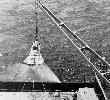 Since last year, the Soviet developmental programs for providing a family of new space launch vehicles and reusable spacecraft suitable for military and civil purposes have come into sharper focus. Significant new launch and support facilities at Tyuratam are nearing completion. Some of these should be ready this year or next to support initial testing of new launch vehicles. These vehicles include a space transportation system (STSI, that in many respects copies the design of the US space shuttle, a new heavy-lift launch vehicle based on the core rockets of the STS and anew medium-lift launch vehicle that is evidently designed for high launch rates. The new spacecraft include a space shuttle that differs from the US shuttle only in the respect that the main engines are not on the orbiter, a small space plane that could be a test vehicle or a scale version of a military space plane, and a space tug that would be used in space to move equipment and supplies from one orbit to another. The Soviet shuttle could be first tested in the mid-to-late 1980s. The space plane scale model has already been tested three times, and the space tug probably will reach operational status late in the 1980s.
Since last year, the Soviet developmental programs for providing a family of new space launch vehicles and reusable spacecraft suitable for military and civil purposes have come into sharper focus. Significant new launch and support facilities at Tyuratam are nearing completion. Some of these should be ready this year or next to support initial testing of new launch vehicles. These vehicles include a space transportation system (STSI, that in many respects copies the design of the US space shuttle, a new heavy-lift launch vehicle based on the core rockets of the STS and anew medium-lift launch vehicle that is evidently designed for high launch rates. The new spacecraft include a space shuttle that differs from the US shuttle only in the respect that the main engines are not on the orbiter, a small space plane that could be a test vehicle or a scale version of a military space plane, and a space tug that would be used in space to move equipment and supplies from one orbit to another. The Soviet shuttle could be first tested in the mid-to-late 1980s. The space plane scale model has already been tested three times, and the space tug probably will reach operational status late in the 1980s.
 In addition, the Soviets evidently intend to continue using their many types of operational space launch vehicles for at least another decade. This current family of vehicles, which supports a space effort of 100 or more launches per year, combined with the new generation of systems, indicates that The Soviets will be able by the mid- to-late 1980s to increase significantly their space program both in numbers and payload weight. In this
regard, the new heavy-lift vehicle is estimated to have the capability to place payloads weighing upwards of 330,000 pounds into low earth orbit. This is about seven times more than the largest operational Soviet booster can deliver today, and about five times the maximum US capability. Despite the obvious civil and scientific uses to which these capabilities could be put, the Soviets will continue,as in the past, to devote most of their future space program to military purposes.
In addition, the Soviets evidently intend to continue using their many types of operational space launch vehicles for at least another decade. This current family of vehicles, which supports a space effort of 100 or more launches per year, combined with the new generation of systems, indicates that The Soviets will be able by the mid- to-late 1980s to increase significantly their space program both in numbers and payload weight. In this
regard, the new heavy-lift vehicle is estimated to have the capability to place payloads weighing upwards of 330,000 pounds into low earth orbit. This is about seven times more than the largest operational Soviet booster can deliver today, and about five times the maximum US capability. Despite the obvious civil and scientific uses to which these capabilities could be put, the Soviets will continue,as in the past, to devote most of their future space program to military purposes.
Military systems now account for more than 70 percent of Soviet space launches. Another 20 percent have combined military-civil application, with less than 10 percent devoted to purely civil/scientific activities. Very little of their effort is devoted to programs that have economic benefit.
 The Soviets routinely conduct about four to five times as many space launches per year as
the United States. This is necessitated primarily by the shorter system lifetimes and poorer reliability of most Soviet satellites. The fact that they routinely operate this way in peacetime, however, gives them an inherently greater capability to increase rapidly the number of military satellites in orbit and to replace lost or damaged satellites as long as launch facilities are intact.
The Soviets routinely conduct about four to five times as many space launches per year as
the United States. This is necessitated primarily by the shorter system lifetimes and poorer reliability of most Soviet satellites. The fact that they routinely operate this way in peacetime, however, gives them an inherently greater capability to increase rapidly the number of military satellites in orbit and to replace lost or damaged satellites as long as launch facilities are intact.
The US and USSR currently maintain about the same number of operational satellites in orbit, 110 to 120. The Soviet inventory of operational space systems provides the capability to perform the following military functions:
- reconnaissance and surveillance,
- command, control and communications,
- ICBM launch detection and attack warning,
- strategic and tactical targeting,
- navigational support,
- meteorological support, and
- antisatellite operations.
The Soviets have satellites that are designed to perform naval surveillance and targeting missions. These satellites are strictly military systems intended to support Soviet naval operations against large surface ships and other surface ship formations.
The Soviets have a deployed antisatellite weapon system that is capable of attacking satellites in low-to-medium earth orbits. The intercontinental warfare section of this chapter has addressed Soviet antisatellite and other space-oriented weapons programs in some detail. Recent Soviet proposals to ban all ASAT tests and future deployments of ASAT weapons are intended to put the United States at a disadvantage in this area. It is important to note that the proposed treaty does not prevent developing and deploying advanced ground-based weapons - such as high energy lasers - that could be used in an antisatellite role.
 The Soviets continue to pursue their manned space programs maintaining in orbit the SALYUT space station, which is manned during most of the year. This gives the Soviets the capability to perform a variety of functions from space, including military R&D and the use of man to augment their other reconnaissance and surveillance efforts. A larger,permanently manned space station, expected during the next decade, will significantly increase their in-orbit operations capabilities. This station could be used as a stepping stone to interplanetary exploration and the establishment of bases on other planetary bodies. The Soviets, however, are more likely to use such a station to perform command and control, reconnaissance and targeting functions. During wartime, it could perform these functions and more offensively oriented missions as well. The Soviets believe in the military utility of maintaining cosmonauts in orbit. Over the next 10 years, therefore, the Soviets are likely to develop primarily for military purposes:
The Soviets continue to pursue their manned space programs maintaining in orbit the SALYUT space station, which is manned during most of the year. This gives the Soviets the capability to perform a variety of functions from space, including military R&D and the use of man to augment their other reconnaissance and surveillance efforts. A larger,permanently manned space station, expected during the next decade, will significantly increase their in-orbit operations capabilities. This station could be used as a stepping stone to interplanetary exploration and the establishment of bases on other planetary bodies. The Soviets, however, are more likely to use such a station to perform command and control, reconnaissance and targeting functions. During wartime, it could perform these functions and more offensively oriented missions as well. The Soviets believe in the military utility of maintaining cosmonauts in orbit. Over the next 10 years, therefore, the Soviets are likely to develop primarily for military purposes:
- a permanently manned SKYLAB size space station to be operational in the next 2-3 years with a 6- to 12- person crew, and
- a very large modular space station, to be operational by the early- to -mid 1990s, which could house as many as 100 personnel.
By all measures, the Soviet level of effort devoted to space in the 1980s is increasing significantly over the activities noted in the 1970s. The projected yearly rate of growth of the Soviet space program is expected to outpace both the annual rate of growth in overall Soviet military spending and that of the Soviet gross national product (GNP) for a number of years to come.
 The Soviets have embarked upon a long term, broad-based effort to expand their operational military capability in space. A major Soviet objective is to expand warfighting capability in space and achieve a measure of superiority in that arena. Their technological base is strengthening and is being enhanced by technology transfer from the West. Their launch capability is increasing with the development of new facilities and booster systems.They continue to operate the world's only operational antisatellite system, while they test and develop more sophisticated space weaponry. It is clear the Soviets are striving to integrate their space systems with the rest of their Armed Forces to ensure superior military capabilities in all arenas.
The Soviets have embarked upon a long term, broad-based effort to expand their operational military capability in space. A major Soviet objective is to expand warfighting capability in space and achieve a measure of superiority in that arena. Their technological base is strengthening and is being enhanced by technology transfer from the West. Their launch capability is increasing with the development of new facilities and booster systems.They continue to operate the world's only operational antisatellite system, while they test and develop more sophisticated space weaponry. It is clear the Soviets are striving to integrate their space systems with the rest of their Armed Forces to ensure superior military capabilities in all arenas.